TWIN LAKES COLORADO
july 9, 2019
The first time we stumbled upon Twin Lakes, Colorado is probably the same way many others do—on the drive from Denver to Aspen. It’s often the lesser GPS-suggested route, but I’ll go ahead and assure you it’s the better one.
Even before you hit the official village, the arrival of two almond-shaped lakes stir your attention. Mt. Massive and Mt. Elbert, the two tallest peaks in Colorado, rise out of the snowcapped range as you glide along a sleepy two-lane road where the occasional sign points to campsites both along the waterfront and the hillside overhead.
One quick decision and you’ll spin down an access road you’re not sure if you should be on, the Mt. Elbert Power Plant behind chainlink and barb. A few vacant cars sit quiet in the dirt. Down a grassy embankment and spread apart on a narrow strip of rocky brown sand, fisherman tug on lines cast into the glacial water. The surrounding wilderness reflects against it, and as you stand on the quiet bank scanning the shoreline, one of the most impressive features is really what isn’t there at all.
There isn’t a single building obstructing the landscape. There’s no ski lodge. There’s no touristy retail strips. There’s not even a stoplight in what feels like a one-stoplight kind of a town.
But that doesn’t stop visitors from pulling off to the side of the road, a steady stream of them on most Spring and Summer days. What makes them pause, what made us pause, is the chance to gawk at what feels like a ghost town—a ghost town with a pulse.
Twin Lakes (formerly Dayton) was an important transportation hub between Aspen and Leadville between the mid-1860s and early 1890s during the gold and silver mining boom that ushered in prosperity for much of Colorado at the time.
There’s also another reason people stop here. "We’re the only toilet from Leadville to Aspen," jokes Colleen Schweigert, volunteer coordinator at the Twin Lakes Visitor Center, known as the Red Rooster and named after the former Red Rooster Tavern which was also a hotel and brothel.
Over a dozen curious and well-preserved historical buildings remain just like the Red Rooster. Many are of log construction and built around the same time—a blacksmith shop that temporarily served as the courthouse and county seat, the remnants of a dormitory-style hotel built by T.C. Wetmore, the Twin Lakes Schoolhouse that operated from 1895 through 1959, the Willard House general store, an inn, an old ice house, the original dance hall, and several residential cabins, some of them relocated.


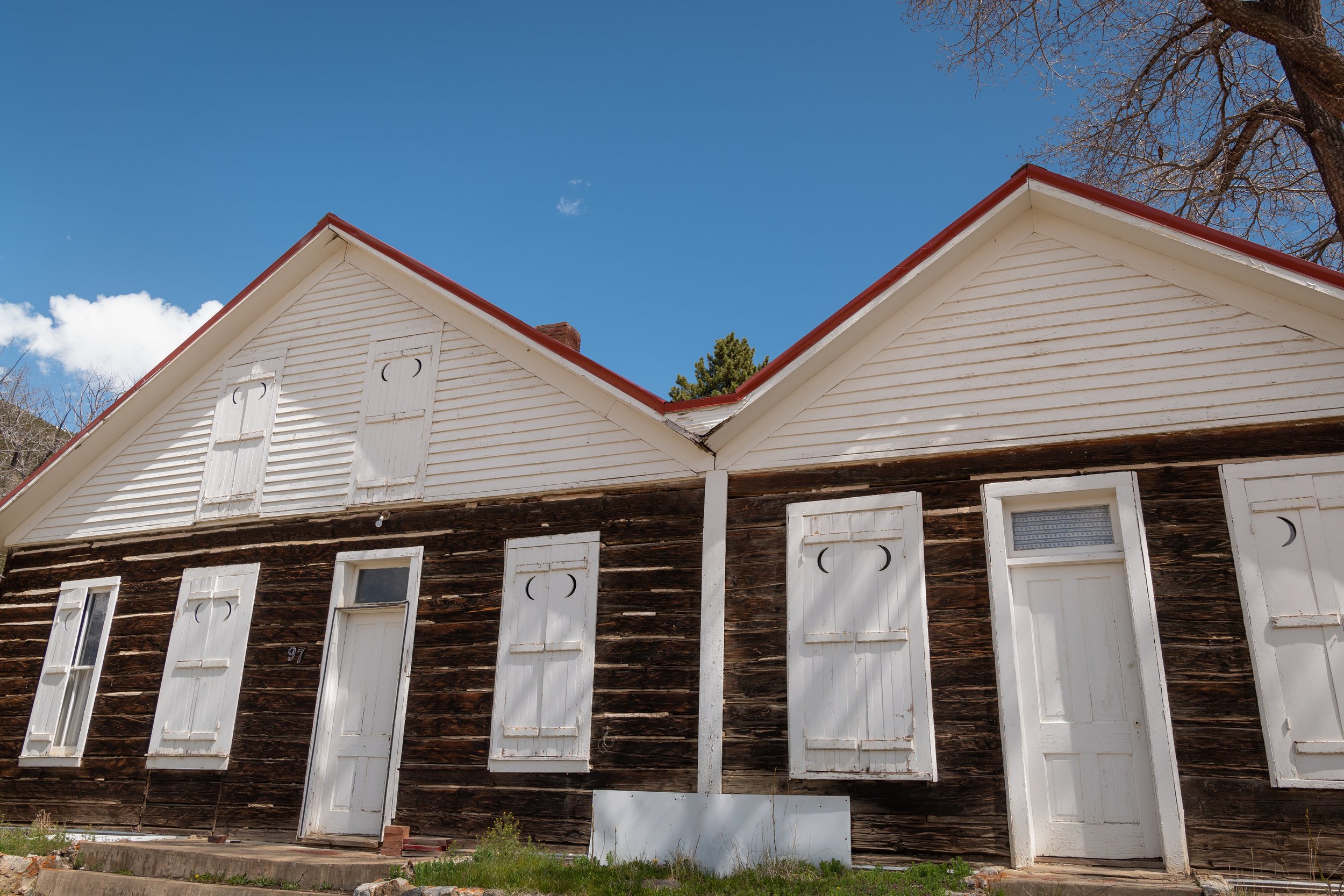




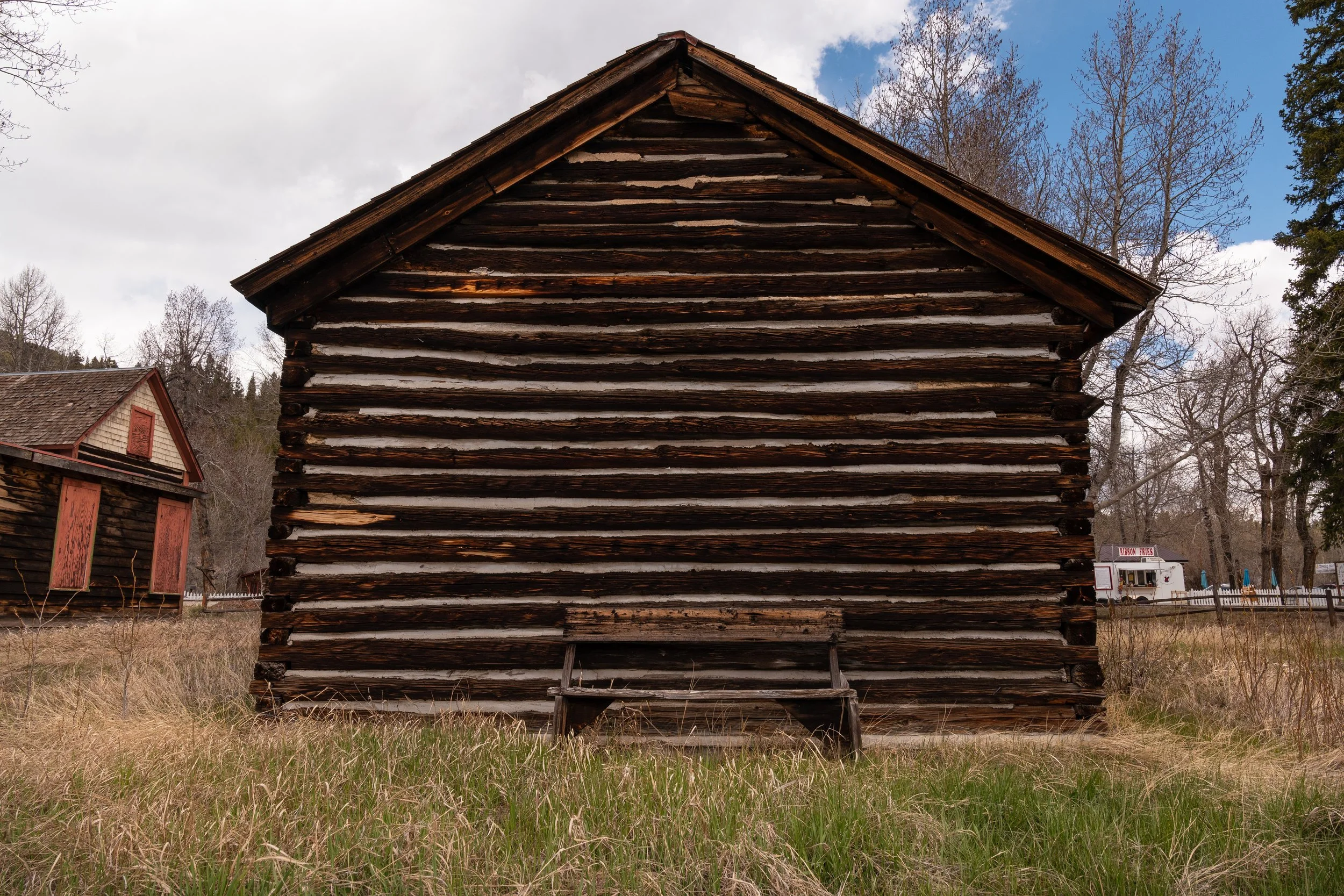
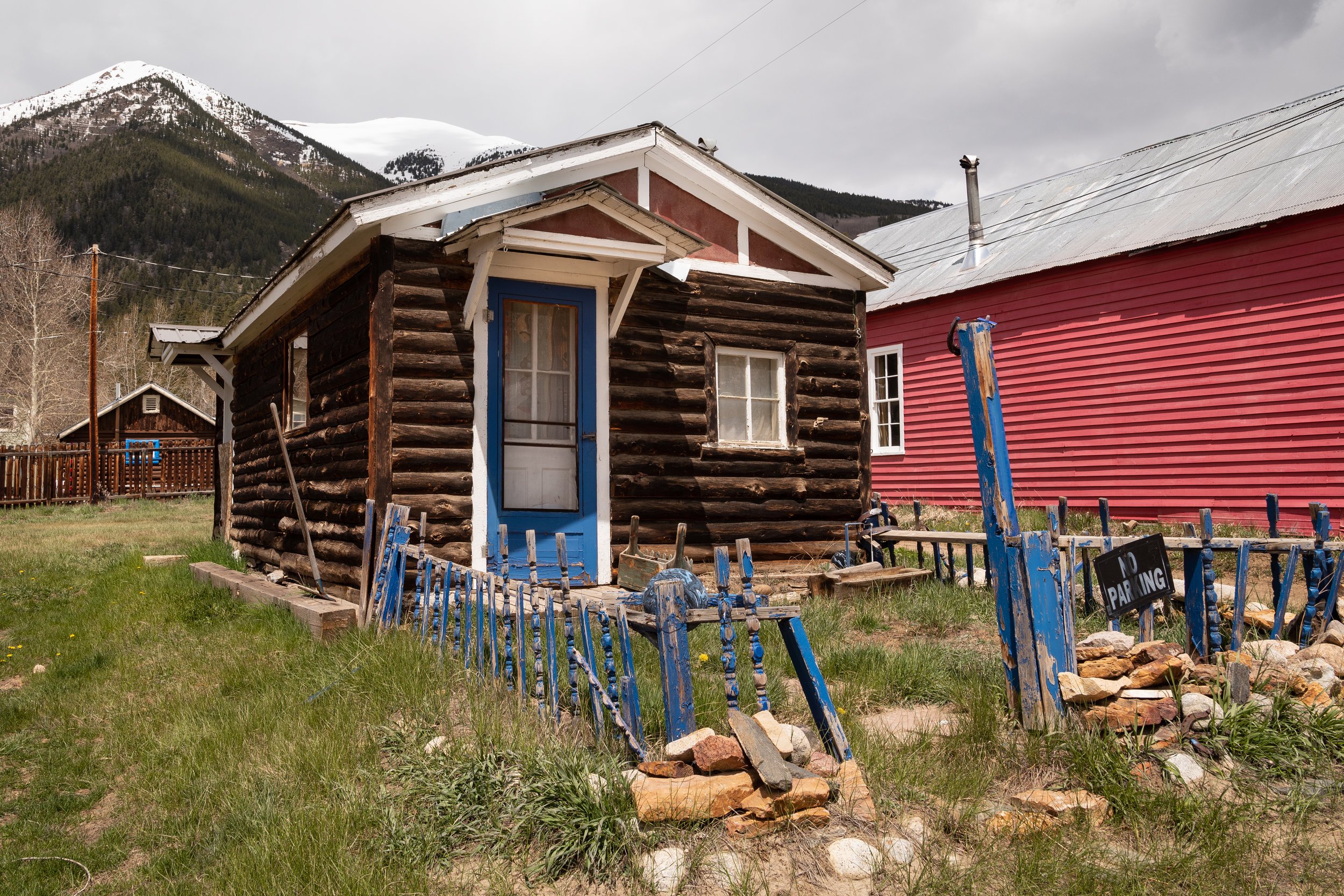
Today, they’re markers on a walking tour. Some are boarded up, and most don’t tell their story unless you find someone to ask. But they’re also reminders, not just of the bust that arrived hear, but how this place has managed to survive at all.
And as you take a closer look, that pulse I mentioned, it starts to feel a bit stronger. The outdoor deck at the Twin Lakes Inn & Saloon is full. Campers poke around the general store for snacks and firewood. The coffee bus servers a handful of cyclists refueling their ride. A woman spots a photographer (me), eager to point out the likeness of a praying angel—its figure and form shaped by the yellow-green aspens on a hillside to the north.
I’ll add that in our short time of exploring the village itself, we were greeted by four of its members. That doesn’t sound like much in any other neighborhood of the world, but here in the official historic district of Twin Lakes there are only 23 residents currently. And it’s clear that among them there’s a very endearing dedication to not only the preservation of its structures and stories but also to protect it from the kind of development that might alter its historical identity.
There’s another curiosity too.
On the other side of the lake, a gentle 4-mile roundtrip hike through those same angel aspens leads to the relocated site of the Interlaken Hotel and Resort. Locals refer to it as a ghost resort. Built in 1879 and developed by entrepreneur and mining investor James V. Dexter in the 1880s, the resort was a popular draw. The Leadville tourism website refers to as "Colorado’s most beautiful resort in the late 19th Century."
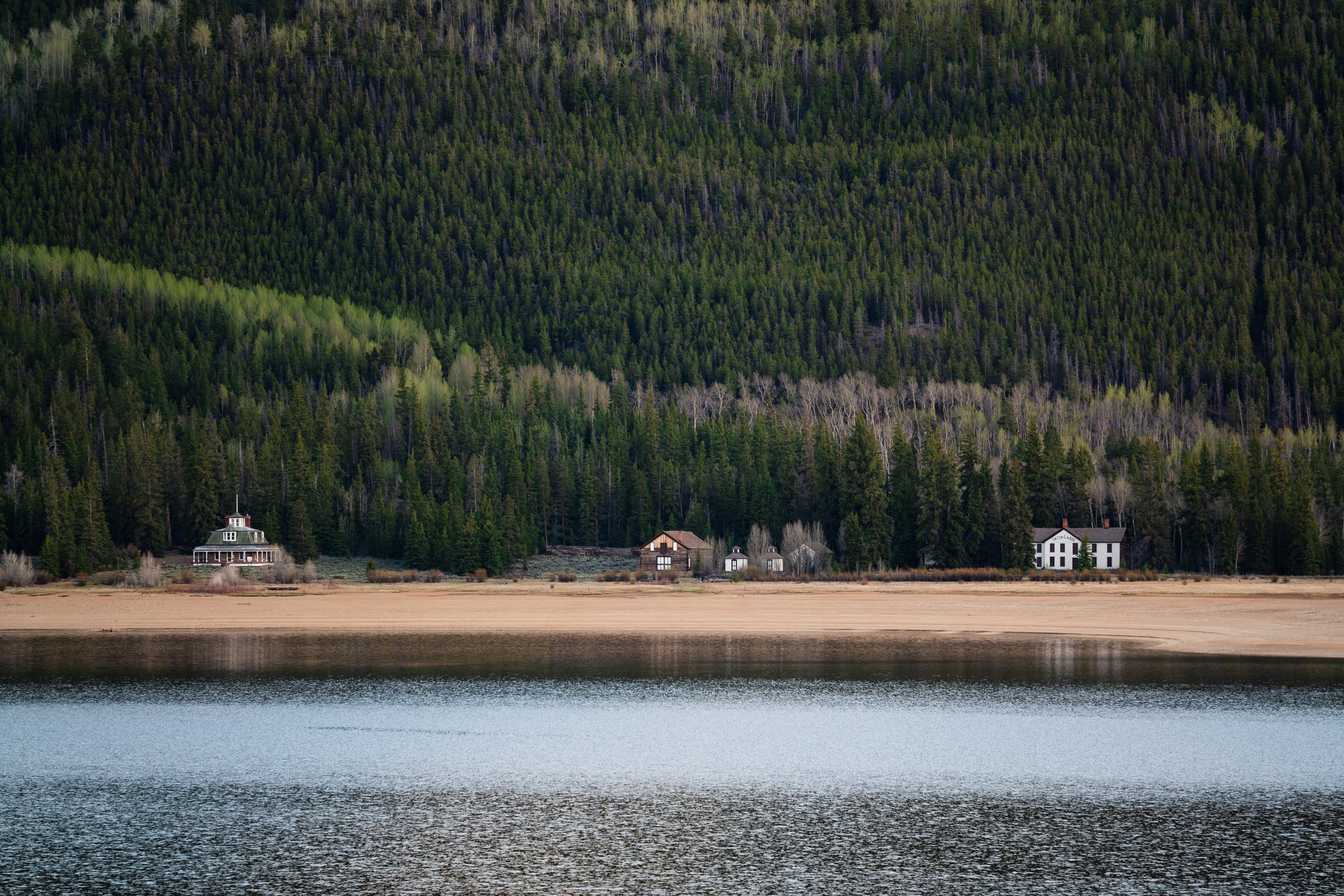

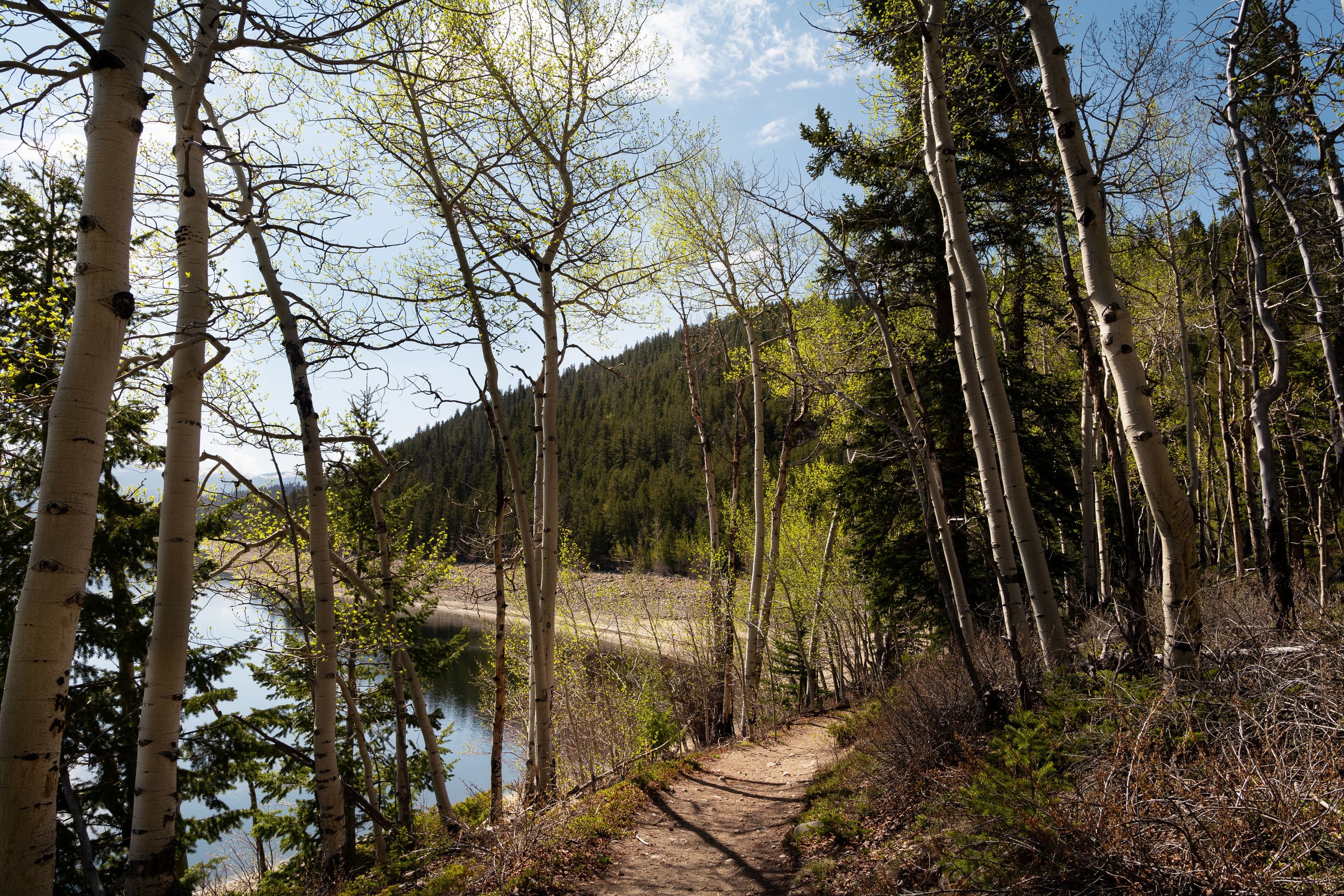








Especially curious to me is that Twin Lakes, a town with a thriving resort at the onset of the mining bust didn’t evolve into even more of a tourist destination. If you compare, and I’m no expert here, the geographical qualities of, say, Twin Lakes to Aspen—Aspen recovered from the mining bust through skiing—it’s interesting that Twin Lakes didn’t follow suit.
Actually, it turns out that low, stagnant waters during a dam construction project at the turn of the century resulted in weary guests staying away due to fears of malaria.
Maybe Aspen was just lucky. In a lot of ways, I think Twin Lakes was even more fortunate.



HOW TO GET TO TWIN LAKES, COLORADO
FROM DENVER:
Twin Lakes is approximately a 2 hour and 15-minute drive from Denver, Colorado, and is absolutely worth the drive to get here.
FROM ASPEN:
Travel between Twin Lakes and Aspen itself via Top of the Rockies Scenic Byway, a high mountain road that winds to the summit of Independence Pass and crosses the Continental Divide at 12,905 feet, is limited between Memorial Day and late October as it’s closed from the onset of fall through mid-Spring.

